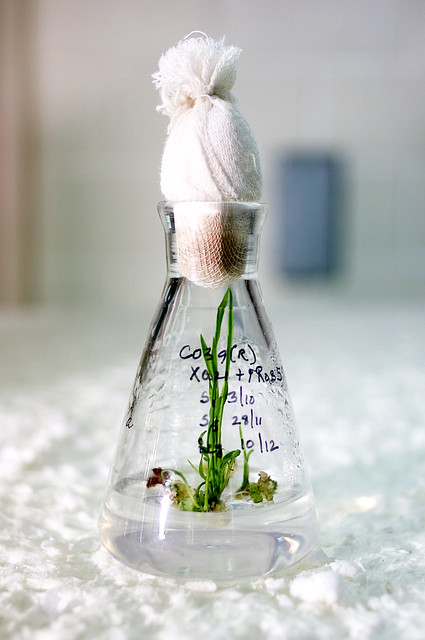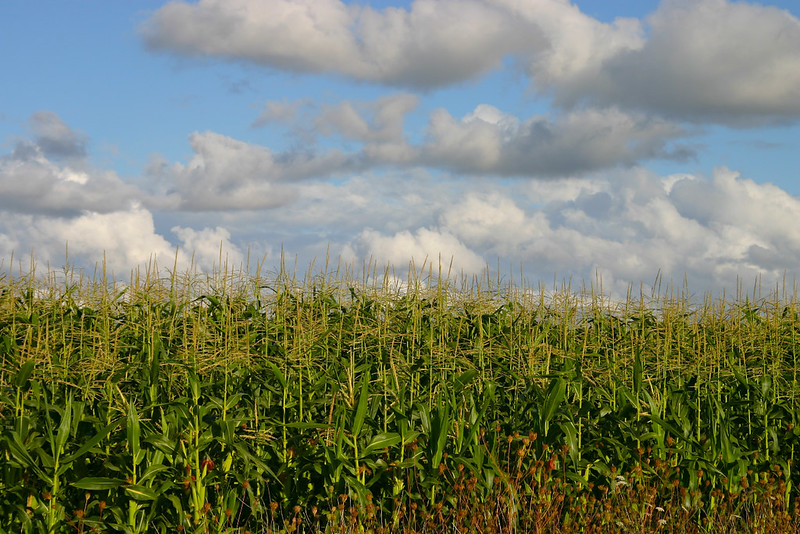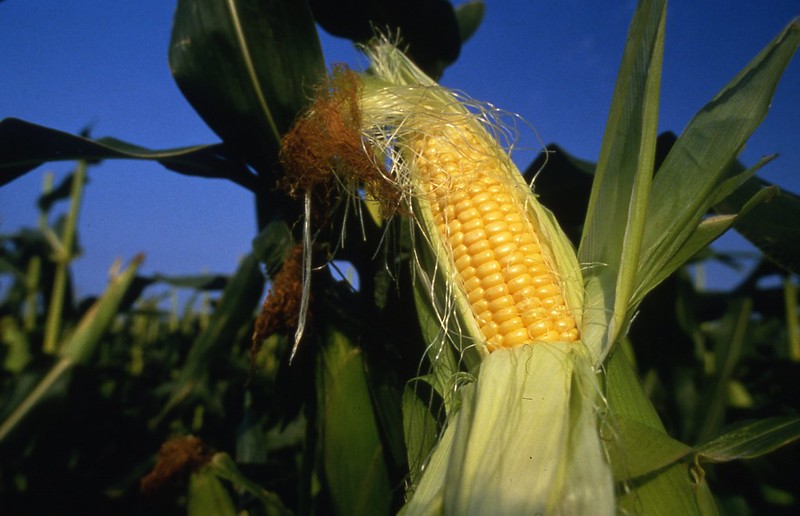 |
| Rice plants in tissue culture. (picture credit: IRRI) |
In doing your own research on a topic like genetically modified organisms (GMOs), you’ll come across online articles to support almost any claim. Figuring out whether those claims are made with authority and are based on sound science can be tricky. Just because something uses a lot of jargon and sounds ‘sciencey’, it doesn’t necessarily mean it is. Genetically engineered (GE) crops are some of the most intensively tested food we’ve got. The overwhelming scientific consensus from many large-scale studies published in leading peer-reviewed scientific research journals says that GE food crops pose no additional risk to human health and do not have nutritional profiles different from those of conventional crops. Entire nations of people have been eating them for a long time now, with absolutely no health problems that can be attributed to GE technology. Studies promoted by anti-GMO campaigners as supposed evidence of the harmful effects of consuming GMOs on our bodies are taken out of the context of the larger scientific consensus, and most often consist of dubious, inadequately reviewed research. Dissidents insist on touting badly designed junk science studies, attempting to generate the perception that there is disagreement in the scientific community, when this is not the case. The media, in a misguided attempt at reporting with balance, tries to give equal weight to both sides of the story. However, just like the scientific consensus on the theory of gravity, there really is no other side to the story—there is only gravity.
 |
| (picture credit: Oregon Dept. of Agriculture) |
With the recent rejection of California Proposition 37, labeling of food made from GE crops has gained more media coverage worldwide. Merely labeling a product “contains GMOs” makes it seem like a warning of some sort, and in fact does not allow a consumer to make an informed choice at all. It’s simple scaremongering, and a wasted opportunity to educate. As a consumer, I might want to know that a product is made from a crop engineered to use less chemical fertilizer bad for the environment, or to require less pesticide that might be harmful to farm workers. Food labeling helps us all make informed decisions, and it’s how that labeling is done that makes the difference.
 |
| (picture credit: Oregon Dept. of Agriculture) |
We need to grow more and better food on less suitable land under increasingly variable climatic conditions. The best way to ensure future world food security is to combine biotechnology with sustainable agricultural practices. Subsistence farmers, growing crops like cassava and sorghum, stand to gain the most as scientific research expands beyond industrial commodity crops like maize and soybeans. Current and future research efforts will focus on engineering traits of direct benefit to the end consumer, delivering more nutrients to those suffering from hidden hunger, such as Golden Rice, engineered to help alleviate vitamin A deficiency.
Because of scientific progress, we are living healthier, longer lives than ever before in the history of our species. So embrace the biotechnology in your basket, because scientific agriculture is the greatest tool for sustainable living on this planet into the 21st century and beyond.

3 comments:
nice post! am looking forward to read your future post, great weekend ahead! https://www.burlingtonsquare.com.sg/2019/06/14/embrace-these-great-wellness-tips-for-the-new-year/
They went above and beyond to meet all needs product ui, while their superb communication skills made them easy to work with.
This is a cool blog. Extremely helpful info. Thank you! biology blog
Post a Comment